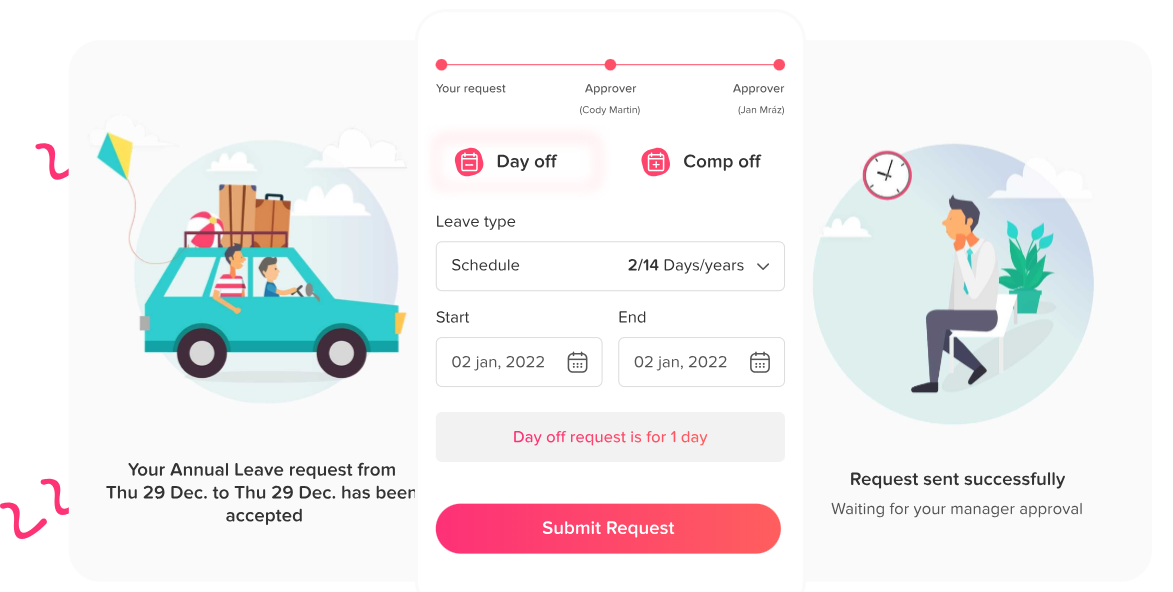As the modern workplace evolves and traditional gender roles continue to shift, paternity leave has emerged as a critical component of family well being, employee satisfaction, and gender equality. For decades, maternity leave was viewed as the cornerstone of early child rearing support, while fathers were largely excluded from similar benefits. Today, however, the narrative is changing.
Men across the globe are beginning to assert their right and desire to play a hands on role in parenting from day one. Paternity leave not only allows fathers to form early bonds with their children but also fosters healthier families and more inclusive work environments. This article explores the significance of paternity leave, its social, psychological, and economic impacts, and what it means for work life balance in the 21st century.
What is Paternity Leave?
Paternity leave refers to the period a father is permitted to take off from work following the birth or adoption of a child. It can be paid or unpaid, and its duration varies by country, company, and employment policies. While many nations still offer minimal time for fathers, some countries are pioneering generous paternity leave programs as part of broader family support policies.
Why Paternity Leave Matters
Early Childhood Development
Numerous studies indicate that a father’s involvement in a child’s early months positively influences cognitive, emotional, and social development. Infants with engaged fathers often show improved language skills, greater emotional security, and better academic performance later in life.
According to a study published in the Journal of Child Psychology and Psychiatry, babies whose fathers were actively involved at three months old were less likely to experience behavioral issues at one year.
Partner Support and Postpartum Recovery
Childbirth recovery can take weeks or months. When fathers take paternity leave, mothers are more likely to recover faster and experience lower rates of postpartum depression. Shared responsibilities reduce the emotional and physical burden on mothers, fostering a healthier family environment.
Gender Equality in Parenting
When men take parental leave, it sends a powerful message that parenting is not solely a woman’s responsibility. This encourages more balanced dynamics at home and in the workplace, promoting equality in caregiving roles and challenging the outdated perception of the “breadwinner dad.”
Global Trends and Policies
Countries differ widely in their paternity leave offerings:
-
Sweden: Offers 480 days of paid parental leave per child, 90 of which are reserved exclusively for each parent.
-
Norway: Fathers receive up to 15 weeks of fully paid leave.
-
Japan: Offers one of the most generous paid leave policies (up to a year), though societal pressure results in low uptake.
-
USA: No federal mandate for paid paternity leave, though some states and companies offer it voluntarily.
Despite generous policies in some regions, uptake remains low globally due to fear of career consequences, stigma, and financial disincentives.
The Psychological Impact on Fathers
Fatherhood is a transformative experience that requires emotional adjustment and a redefinition of personal identity. Time off work gives fathers the space to process their new role, build confidence in their parenting abilities, and reduce anxiety about being an “inadequate” or “secondary” parent.
Research from the University of Oslo found that men who took two weeks or more of paternity leave were significantly more likely to be involved in childcare activities long term.
Benefits to Employers
Contrary to fears about productivity loss, paternity leave can benefit businesses:
-
Improved employee retention: Fathers who feel supported are more loyal to their employers.
-
Higher workplace morale: Employees value companies that prioritize family life.
-
Enhanced productivity: Well rested and mentally supported employees perform better.
-
Inclusive culture: Paternity leave fosters gender equality, which attracts diverse talent.
Barriers to Taking Paternity Leave
Despite increasing awareness, many fathers still hesitate to take advantage of leave policies due to:
-
Workplace stigma: Fear of being perceived as less committed or ambitious.
-
Financial concerns: Many countries offer unpaid or partially paid leave.
-
Lack of awareness: Some employees are unaware of their leave entitlements.
-
Cultural norms: Societal expectations may discourage men from prioritizing caregiving.
Strategies to Encourage Paternity Leave
Normalize Leave Through Leadership
Leadership plays a crucial role in setting the tone for workplace culture. When senior executives, particularly male leaders, openly take paternity leave, they send a clear message that family responsibilities are valued just as highly as professional commitments. This visibility helps dismantle outdated stereotypes that caregiving is a “female duty” and encourages employees at all levels to take advantage of parental leave without guilt or fear of judgment. By leading through example, executives not only promote gender equality but also foster a culture of empathy and understanding across the organization.
Offer Paid Paternity Leave
Financial insecurity remains one of the biggest barriers preventing fathers from taking paternity leave. Organizations that offer paid or partially paid paternity leave demonstrate a genuine commitment to employee well-being and inclusivity. Paid leave removes the economic burden that might otherwise discourage fathers from bonding with their newborns or supporting their partners during postpartum recovery. Moreover, offering paid leave can significantly boost employee morale, loyalty, and retention, making it a strategic investment in both people and performance.
Educate Employees About Their Rights
A well-informed workforce is an empowered one. Many fathers hesitate to take paternity leave simply because they are unaware of their entitlements or the process for requesting time off. HR departments should proactively communicate parental leave policies through onboarding sessions, internal campaigns, and easily accessible digital resources. Providing clear guidance on eligibility, duration, pay structure, and application procedures ensures that all employees, regardless of role or seniority, can confidently plan their leave without administrative confusion.
Build a Supportive Workplace Culture
Policies alone are not enough; the surrounding culture must also support their use. Organizations should strive to create an environment where taking paternity leave is celebrated, not stigmatized. Human resources teams can play a pivotal role by introducing initiatives such as new parent mentorship programs, fatherhood support groups, and reintegration plans that ease the transition back to work. Encouraging open conversations about fatherhood, mental health, and work-life balance strengthens trust and signals that caregiving is an essential part of a healthy organizational ecosystem.
Work Life Balance: A New Paradigm for Men
As younger generations prioritize values like inclusion, empathy, and purpose driven work, companies and governments will be increasingly pressured to reform outdated parental leave policies.
A 2023 Deloitte survey showed that 57% of millennial fathers would switch jobs for better parental leave benefits.
Organizations that embrace this trend will not only improve employee welfare but also strengthen their competitive edge in talent acquisition and retention.
FAQ
What is the typical duration of paternity leave?
The length of paternity leave varies widely depending on the country and employer. In some countries like Sweden or Iceland, fathers may receive several months of paid leave, while others offer just a few days. Some employers go beyond legal minimums and provide extended, paid time off. It’s important to check both national legislation and your company’s HR policies.
Is paternity paid or unpaid?
This depends on where you live and work. Some countries mandate paid paternity leave, while others do not require any compensation. Many private employers choose to offer paid paternity leave as part of their benefits package, even when not required by law. Partial pay or use of paid time off (PTO) may also be an option.
Can paternity be taken at any time after birth?
Most policies allow paternity leave to be taken within a specific window of time after the child’s birth or adoption typically within the first few weeks or months. Some flexible policies let fathers split the leave or take it intermittently. However, guidelines can vary, so it’s best to confirm with your employer or local labor authority.
Can both parents be on leave at the same time?
Yes, in many countries and workplaces, both parents can take leave concurrently. This enables shared caregiving in the crucial early stages of the baby’s life. However, some policies may encourage or require parents to stagger their leave to ensure ongoing care over a longer period.
Will taking paternity leave hurt my career?
In progressive workplaces, taking paternity leave is encouraged and does not impact promotions or job security. However, some fathers still fear stigma. The best companies recognize the importance of family and actively support employees who take leave. If you’re concerned, speak with HR and document all communications for transparency.
What happens to my salary and benefits during paternity leave?
If your leave is paid, your salary continues either fully or partially. If unpaid, you may have access to government allowances, social insurance, or employer sponsored benefits. Health insurance and other benefits may also continue, depending on your employment agreement.
What if I am self employed or a freelancer?
In some countries, self employed individuals can qualify for parental benefits through government programs. If you’re a freelancer, you’ll need to plan leave financially and logistically, but tax credits or national insurance schemes may be available. Research your local options well in advance.
Can I be denied paternity leave by my employer?
In countries with mandated paternity leave laws, denial is typically illegal unless you’re ineligible (e.g., part time, contractor, probationary). In regions without legal protections, it may be at the employer’s discretion. If you suspect discrimination or unfair denial, consult a labor attorney or local labor board.
How should I prepare for paternity leave?
Here are some practical steps:
Review your company’s leave policy.
Speak with HR early.
Notify your manager and team well in advance.
Arrange for task delegation or coverage.
Plan financially, especially if leave is unpaid or partially paid.
Can paternity leave be taken after adoption or surrogacy?
Yes. In many countries and company policies, paternity leave applies to fathers of adopted children or those born via surrogacy. The goal is to support the father child bond and caregiving role regardless of how the child joins the family.
Conclusion
When fathers are given the opportunity to take meaningful time off, the benefits extend far beyond the household. Families thrive through stronger emotional bonds and shared responsibilities. Mothers experience faster recovery and improved mental health. Children grow up with greater stability and emotional support. And employers gain loyal, engaged, and productive team members who feel valued both as professionals and as parents.
Forward-thinking organizations understand that supporting fathers is not only the right thing to do, it’s a strategic investment. Providing paid paternity leave, promoting flexibility, and normalizing time off for caregiving helps attract top talent, reduce turnover, and foster an inclusive company culture that resonates with the next generation of workers.
Governments and businesses alike have a collective responsibility to make paternity leave accessible, equitable, and stigma-free. By breaking traditional barriers and embracing shared caregiving, we take a crucial step toward a future where family support, workplace equality, and employee well-being coexist seamlessly.
In essence, paternity leave isn’t just about time away from work, it’s about creating a healthier balance between career and care, empowering fathers to be fully present, and building workplaces that truly reflect the values of today’s society.











